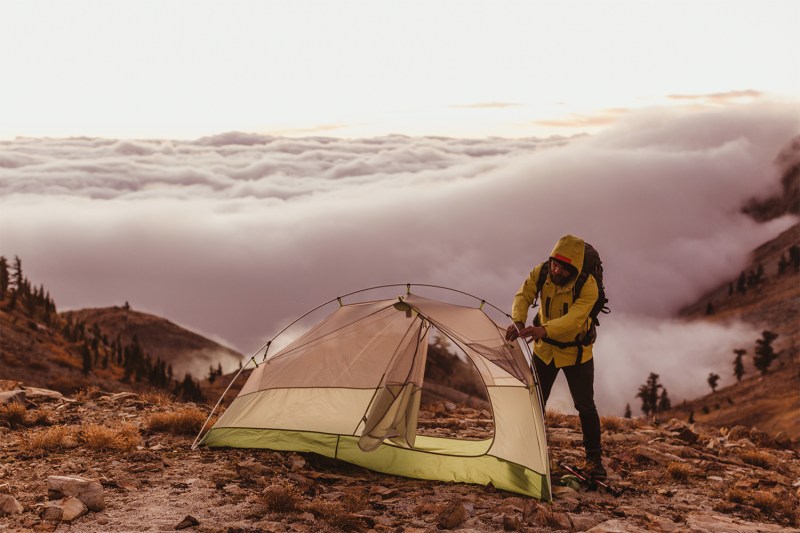
The best camping season is upon us, and that means it’s time to pack your best camping tent and experience what the great outdoors has to offer, whether it’s by staying in the lush backcountry for several days or swimming in pristine alpine lakes.
Camping and RVing have exploded in popularity in the last few years. So no matter where you’re headed, you’re bound to have company. But, if you want to overnight somewhere completely alone with nature all (mostly) to yourself, dispersed camping is the way to go. Roughly one-quarter of the entire U.S. is federally owned land, after all. That means it belongs to us — to me and you.
Provided you follow some basic rules and learn a few camping skills, you can camp on that land for free. Are you ready to spend some alone time with nature? Here’s everything you need to know about dispersed camping in America.

What is dispersed camping?
“Dispersed camping” doesn’t mean dispersing your junk all over your campsite (camping like that usually gets you kicked out). No, dispersed camping is the act of camping for free (usually) on federal lands in the U.S. outside of a designated campsite or recreation facility. Almost every National Forest, Bureau of Land Management District, or Wildlife Management Area is fair game for free camping as long as you abide by a short list of rules.
When did dispersed camping first become a thing?
Dispersed camping, in its essence, has likely been occurring throughout human history. As nomadic and hunter-gatherer societies lived off the land, they would naturally camp wherever was convenient and suitable for their needs, without designated campsites. Therefore, tracing the exact beginnings of dispersed camping becomes quite challenging.
However, the term “dispersed camping” and the regulations surrounding it are a more recent development. Here are some key milestones to consider:
- 19th Century: In the late 19th century, as public lands began to be designated as national parks and forests, the need for some regulations arose to manage camping and protect natural resources. However, dispersed camping was still largely unregulated at this time.
- Mid-20th Century: As recreational camping grew in popularity, concerns about overcrowding and environmental damage in established campgrounds led to increased restrictions and the development of designated campsites. This, in turn, pushed some campers to seek out less crowded areas for camping, leading to the rise of dispersed camping as a distinct activity.
- Late 20th Century: By the late 20th century, land management agencies like the National Park Service and the Bureau of Land Management started formulating specific regulations for dispersed camping on their lands. These regulations aimed to balance recreational opportunities with environmental protection and safety concerns.
- 21st Century: Today, dispersed camping is a recognized and regulated activity on many public lands across the U.S. and Canada. Land management agencies provide information and guidelines for dispersed camping in specific areas, including permitted areas, fire restrictions, wildlife awareness, and Leave No Trace principles.
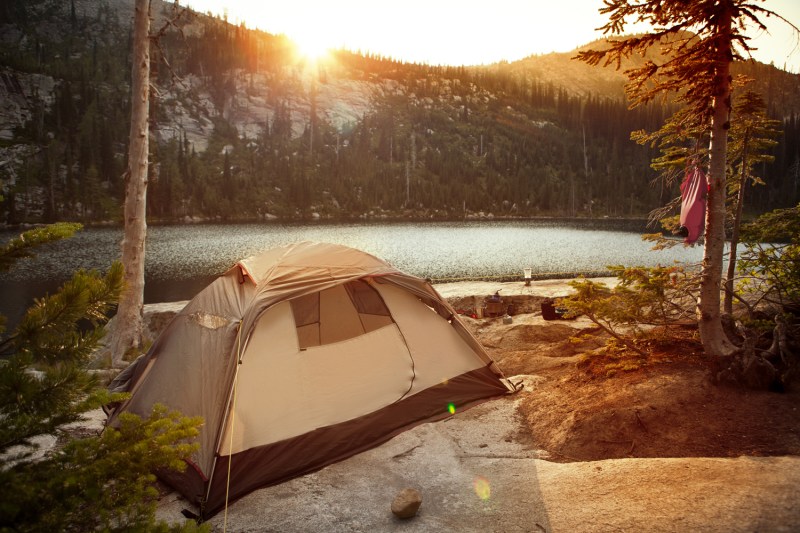
Why should I go dispersed camping?
There are no traditional “sites” involved in dispersed camping. That means most lack proper facilities like toilets, food storage, portable outdoor showers, or even running water, as most car camping sites or paid campgrounds do. But, what these sites lack in facilities, they more than make up for in natural resources, solitude, and sometimes amazing views.
Pristine areas some people only see on Instagram are easily accessible from dispersed camping locations. Most people don’t attempt this kind of camping, so you’ll likely have the place to yourself, free from the crowds and noise of traditional campsites and National Park camping destinations. Plus, did we mention they’re completely free?
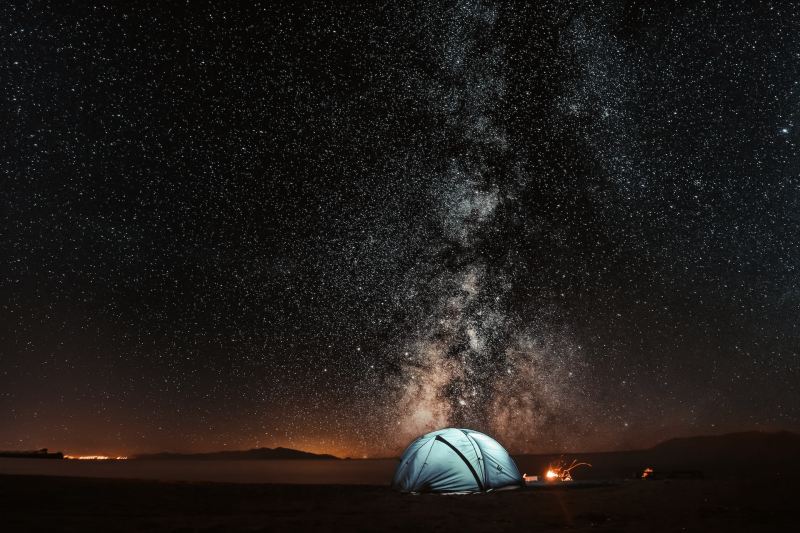
The pros and cons of dispersed camping
Every kind of camping has pros and cons, and dispersed camping is no different. Here are the advantages and disadvantages of camping for free on public land.
Pros
- Cost: The most obvious advantage is that, in most cases, it’s free.
- Atmosphere: There’s something special about camping on undeveloped natural lands.
- Flexibility: You can basically make your own camp wherever and however you want (within reason, of course).
- Confidence: Camping away from developed campgrounds builds confidence through self-sufficiency.
- Privacy: In the best dispersed campsites, you might be the only person (or group) around for miles.
- Sense of adventure: This one speaks for itself.
Cons
- Accessibility: Dispersed campsites are often more difficult to access and sometimes require packing your camping gear in from the road.
- Few amenities: Expect few or no creature comforts when dispersed camping.
- Environmental impact: It’s important to reuse existing campsites to minimize your impact on the environment.
- Safety: Dispersed campsites (especially in the western U.S.) are sometimes remote, meaning emergency services may be hours, even days, away, should you need them.
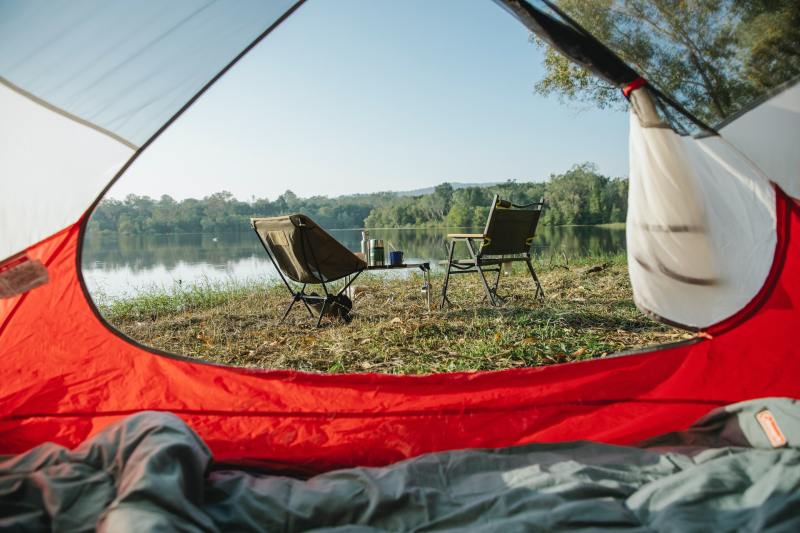
Tips for dispersed camping like a pro
OK, so this dispersed camping thing sounds pretty good. How do you do it? How do you know if you’re in the right place if there are no sites? How do you not get attacked by a bear?
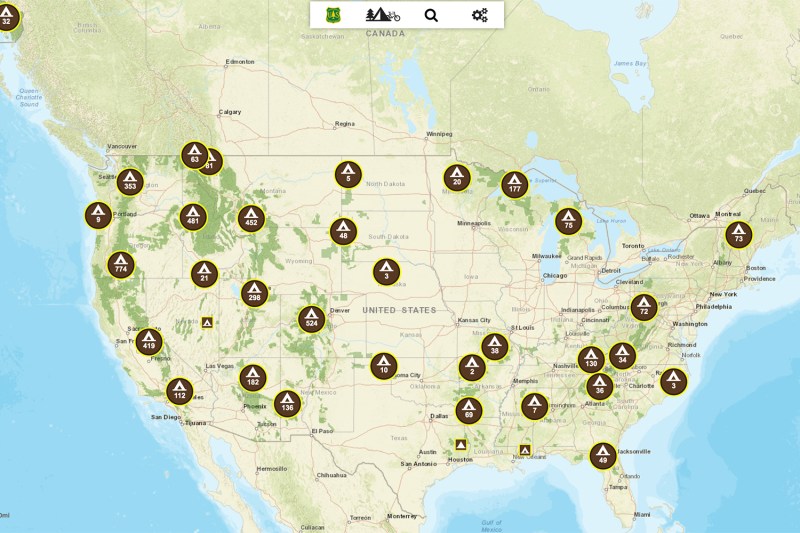
Choosing a dispersed camping destination
When choosing a destination, we need to be careful that we’re not traipsing onto private land. Conveniently, the U.S.
Forest Service provides an interactive map of all the National Forests. Pull this up, scroll around to the area you want to visit, and see exactly what land is National Forest or National Park — National Forest is the one we’re looking for. The interactive map can show trails, official campsites, and resources for all kinds of activities.
The Bureau of Land Management also has many similar maps online. While not interactive, they still show what land is open for dispersed camping. Many other websites list great places to dispersed camp for free around the country, including those outside National Forests and BLM land. Free Campsites and Campendium are great places to start.
Going off-grid often means going outside of cell service. Grocery stores and Ranger stations near where you want to camp will often have these “special” offline resources called paper maps you can take with you. They work without cell service or even power. When you’re in the middle of nowhere, the paper will always work.
It’s always good to have a backup plan, though. We like to research available lodging options nearby, so be sure to check on Booking.com and Kayak.com
Finding a good dispersed campsite
Once you’ve identified where you want to visit, you need a spot to actually pitch your tent. Obviously, cliffs, rivers, and dense woods don’t make great spots to camp, so you’ll need to find a spot that’s accessible.
It’s a good idea to try and use an existing site so you won’t destroy any of the trees and plants in a new spot. Google Maps becomes a good friend in this step, as it does a pretty good job (though it’s not always 100% accurate) of identifying National Forest land. Find the area you want to go to, turn on the satellite image layer, and zoom way in. Many campsites look like clearings or pullouts off the side of dirt roads.
Ranger Stations and Forest Service offices are often happy to help you locate a spot. They can clarify what land is open and alert you to local restrictions. For example, areas may be closed to camping during the summer with a fire restriction, or certain roads might be gated or impassible during the winter due to snow. For the most up-to-date information, it’s best to suss out the nearest ranger station and call them directly for the current beta.
Lastly, be sure to leave enough light and time in the day to find where you are going. Existing dispersed camping sites are rarely marked with any sort of signage. New sites definitely won’t be. Unless you want to pitch your tent in a random location in the dark and possibly have to move in the morning, get there early so you can see what you’re doing.
Knowing what to bring when you’re dispersed camping
The only “facilities” dispersed campsites will have are those provided by nature: Grass, trees, rivers, and mountains. Some dispersed camping sites are not accessible by car, so you’ll be carrying everything in on foot (or bike). A solid outdoor backpack and lightweight gear will be much easier to carry than a 10-person tent, a portable hibachi, and three beer-filled coolers. Since you could be in bear and mountain lion country, you’ll also need some way to store your food safely. Lock up food in your car or a bear canister, or hang it in a tree.
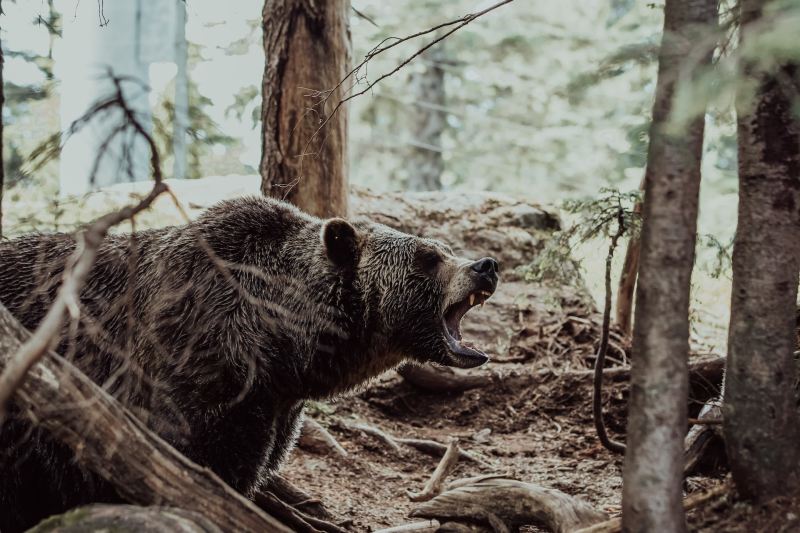
Learning how not to get eaten by a wild animal
With the remoteness and wide-open spaces of National Forests come the potential for animal encounters. Any time we’re out in the woods, we need to be animal-aware. We’re in their home now.
The U.S. Fish and Wildlife Service has some great safety tips. For bears, it suggests: “Never run from a bear. Bears can sprint at up to 40 mph — and, like dogs, will chase animals that run away. If you are approached or charged by a bear, stand your ground and use your best bear deterrent (i.e. bear spray). Most charges by bears are defensive, not predatory.” These are called “bluff charges.”
For brown bears specifically: “Be bear aware and look for signs of recent bear activity. Leave when you see crushed plants, scat, or fresh tracks. Avoid surprising bears when you are out hiking by making noise: clap your hands, sing, and talk. Travel in groups and make extra noise if you are in a brushy or loud area.”
For surviving mountain lion attacks, the U.S. FWS recommends: “Do all you can to appear larger. Raise your arms. If wearing a jacket, take it off and wave it around. Pick up small children. Wave arms slowly, speak firmly in a loud voice, and throw rocks or other objects. Try to remain standing while facing the attacking animal. Fight back if attacked.”
Leaving no trace
So, you’ve found your dispersed campsite and done your homework to prevent run-ins with the local animals. It’s almost time to kick back and enjoy the scenery — but that scenery is only pristine if we keep it that way. There won’t be much left if campers toss their White Claw empties and garbage into the woods.
Since the 1950s, the U.S. Forest Service, National Park Service, and Bureau of Land Management have been teaching the principles of Leave No Trace — a set of guidelines designed to keep our wilderness areas beautiful for generations to come:
- Plan ahead and prepare
- Travel and camp on durable surfaces
- Dispose of waste properly
- Leave what you find
- Minimize campfire impacts
- Respect wildlife
- Be considerate of other visitors
Planning ahead
Planning is what you’re doing right now. Knowing ahead of time where you’re going, what you’re going to take, and how to stay safe while you’re there is half the battle. Leaving your plan with a friend or ranger isn’t a bad idea either.
Having a fire while dispersed camping
Fires are hard on the environment, but we can keep our dispersed camping area clean with a few tips. Use an existing fire pit and campsite when you can. If a site has already been trampled down and the ground burnt from fire, using that one reduces damage to another area. Only collect dead and downed wood; rules for National Parks state there can’t be any cutting of new wood.
Another step to a great fire is bringing your own fire pan. These keep the fire off the ground, not scarring the rocks and plants there. Many fire pans have attachments for cooking and fold up small for travel.
Remembering there are no toilets or water
Of course, we’re taking all our garbage with us when we head out. But with no running water or bathrooms, how do we care for our waste?
Leave No Trace recommends digging a small hole, called a cathole, six inches deep. Do the deed in the hole, then make like a cat and cover it up using the dug-up dirt. Keep your catholes at least 100 feet from any water source so they don’t contaminate it. You might be drinking that water!
For water, taps don’t just grow out of trees, so we’re going to have to bring our own or treat it. Treating water is easy with purification tablets, a filtration pump, or electronic home-friendly and outdoor-friendly water filters.



